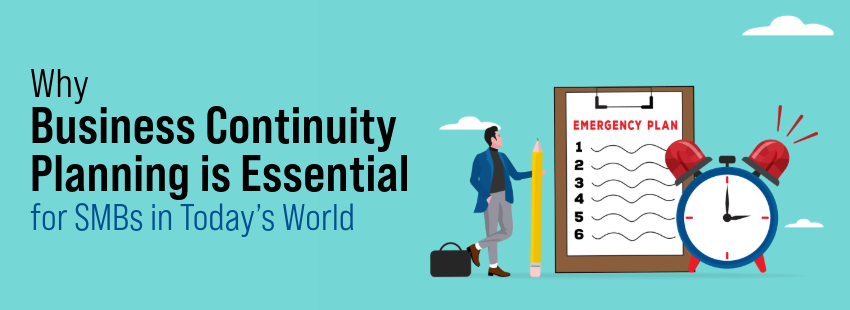We Help Businesses Thrive.
Peace of Mind is closer than you think.
Let's have a quick chat.

In today’s unpredictable world, business continuity planning is no longer an option but a necessity. From fires to floods, hurricanes to tornados, and even earthquakes, businesses have been tested by natural disasters over the past several years. However, what many small and medium-sized business (SMB) owners overlook is the growing threat of cyberattacks, particularly ransomware, which continues to target SMBs daily. Despite the increase in these threats, many businesses still believe they won’t be affected. But the reality is clear—without a solid business continuity plan, recovery may take too long, or worse, never happen.
Natural disasters like wildfires and hurricanes make headlines, but for SMBs, the risk is twofold. Cyber threats, such as ransomware, are just as destructive to operations. In fact, ransomware attacks on SMBs are rising dramatically, with criminals exploiting vulnerabilities to hold companies hostage until hefty ransoms are paid. Unfortunately, many SMB owners still think, “It won’t happen to me.”
The harsh truth is that these events are happening everywhere, and the businesses that don’t have a plan in place suffer the most. A business continuity plan, focusing on both natural and cyber threats, helps ensure that your business can not only survive but also recover quickly and minimize downtime.
SMB owners need to understand that business continuity planning goes beyond just backing up data. While data backups are crucial, they are only one part of a comprehensive plan. Here are five essential steps SMBs can take to minimize risk:
When disaster strikes, the difference between businesses that thrive and those that fail often lies in their ability to recover quickly. To ensure rapid restoration after an incident, here are some critical strategies SMBs should implement:
Business continuity isn’t about planning for if something happens but for when something happens. Whether it’s a wildfire or a ransomware attack, SMBs are more vulnerable than ever. By proactively assessing your risks, developing a comprehensive plan, and training your team, you can minimize the impact of disasters and ensure your business recovers swiftly.
In conclusion, business continuity planning is essential for protecting your SMB from the daily risks posed by natural disasters and cyberattacks. Don’t wait until it’s too late to act—start building your business continuity plan today to minimize risk and maximize restoration when it matters most.

Peace of Mind is closer than you think.
Let's have a quick chat.
Schedule a 15-minute introductory call with our support experts and we'll see what we can do for you.